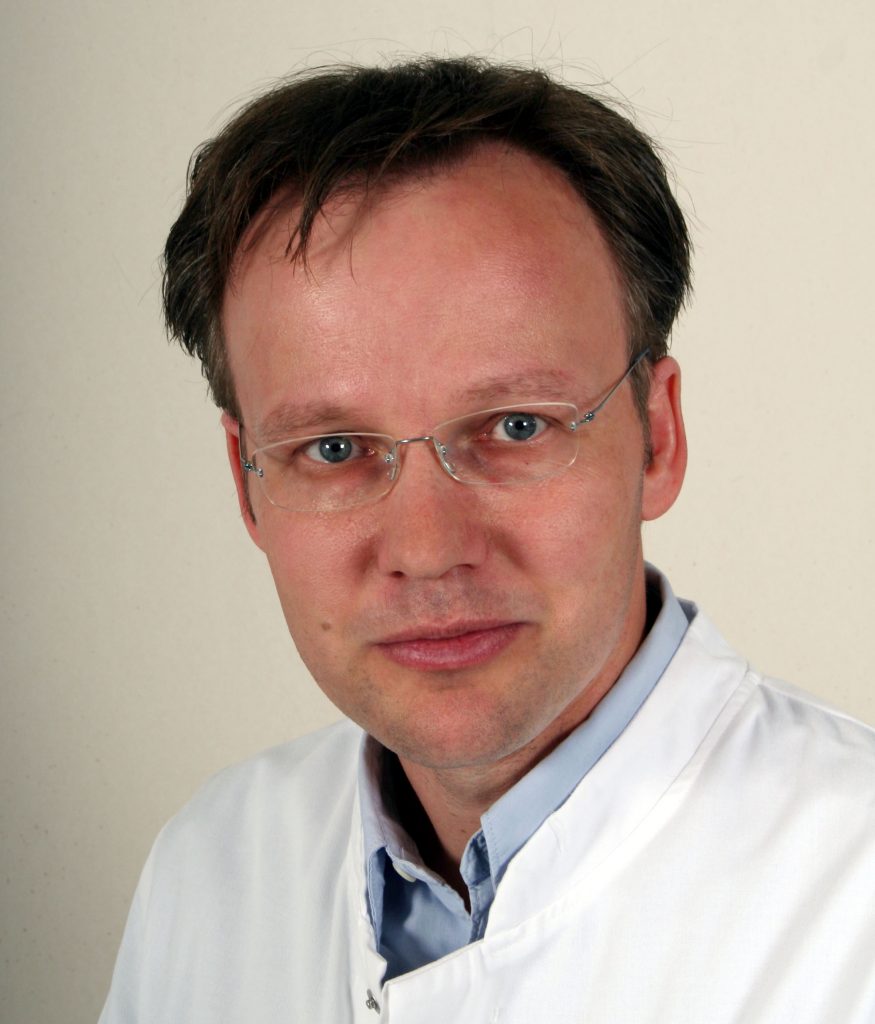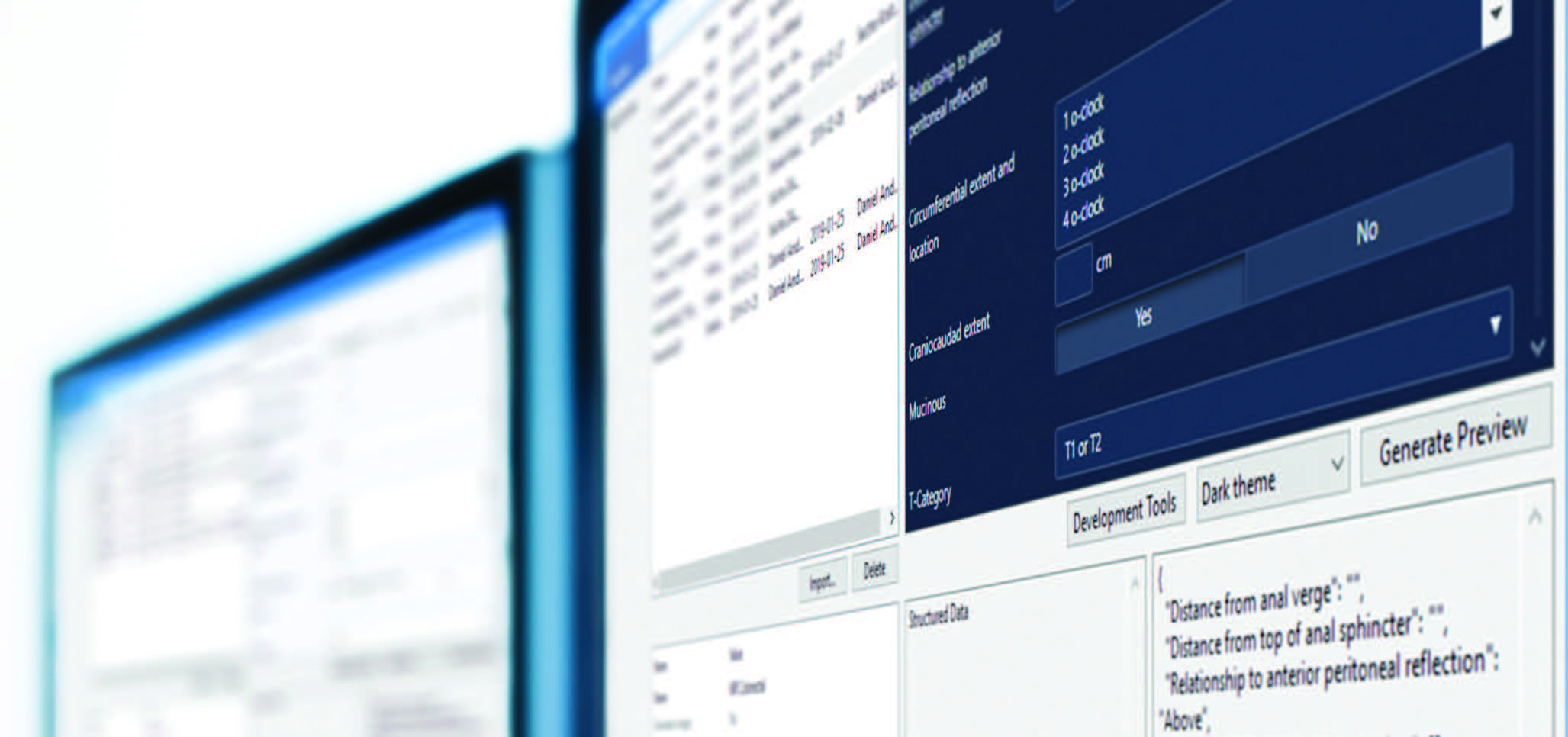Structured reporting—a key benefit of using one consolidated system
One of the benefits of using a consolidated enterprise imaging system for all medical images is the increased accessibility of images and reports across the health system. Since the implementation, The Department of Radiology and Nuclear Medicine at the Robert-Bosch-Hospital have used Sectra UniView, a universal viewer that allows physicians to access and view images and reports on a tablet, or any other device, in order to consult with colleagues or to illustrate upcoming procedures for patients. “This has already become well established in our everyday clinical practice,” explains Schmidt-Thieme.
The adoption of structured reporting, on the other hand, has taken some specialties longer to implement in day-to-day work. Schmidt-Thieme highlights why some have struggled with early adoption while others did not: “In some areas, such as nuclear medicine, they are quite comfortable working with templates, while in other areas structured reporting is a very new concept.”
Adopting structured reporting means breaking old habits
Despite the obvious advantages, often radiologists are reluctant to change what is familiar. Schmidt-Thieme explains, “Traditionally, most radiologists are accustomed to reviewing the images first and then dictating a first draft of the diagnosis, while keeping the images on the screen. With structured reporting, after reviewing the images, the correct values must be entered on the template which can be an unusual way of working for many radiologists.”
He goes on to say that once the radiologists have begun to use structured reports, the templates provide several benefits, such as reducing the complexity of the entries in favor of better data comparability. In well-defined and clear cases, this helps to speed up the productivity of the radiologists’ work. In cases with ambiguous findings, it is harder to use a structured and standardized approach, and additional text is used. “Everything that does not fit into the template fields is added in the comment field. Therefore, in practice, ambiguous findings can often contain both template values and free text comments.” Schmidt-Thieme explains that working with templates is particularly suitable for screening cases that have inconspicuous findings. He also mentions that it had not previously been possible to use structured reporting for patients with complex clinical findings until now through tailored templates for COVID-19 cases.
“Even in the early stages of the pandemic, the disease and its effects were described in great detail,” says Schmidt-Thieme. “Many disease-related parameters in COVID-19 patients are known and can be well-mapped using a template. For example, the template contains a value for the severity and location of an inflammation. A graphic presentation of the lungs is generated from these numerical values, which easily shows which areas are most severely affected by the infection. Since COVID research is constantly providing new knowledge, we continue to supplement the structured values with individual additions in the comment field.”
An additional advantage in research
Even though this way of working with structured templates means additional work for the radiologists in the short term, the data obtained is of great value in the long run—specifically for future research to compare the treatment outcomes of patients with the same medical issues. Schmidt-Thieme explains, “It is gradually becoming clear which type of pneumonia is typical for COVID-19 and which is not. This information is also relevant for the clinician.” He continues, “In practice, secondary findings in complications also play a role. For example, if the patient suffers from a severe bacterial infection in addition to COVID-19, the COVID template offers the treating physicians added value since the secondary findings can easily be identified, such as pleural effusions, changes in the lymph nodes, or reduced ventilatory capacity of the lungs.”
In many cases, switching to the structured diagnosis means saying goodbye to former routines, but Schmidt-Thieme is undoubtedly positive. “The Sectra system has many advantages to make everyone satisfied with the end result—despite the hurdles faced in the early stages. Using structured reporting is extremely helpful in the treatment and follow-up of a patient since the comparability of data is essential—of which findings in free text cannot achieve.”
In brief, structured reporting is of great benefit to radiology departments in terms of productivity, standardization, treatment outcome and future research—a way of working that requires some extra effort in the beginning but ultimately brings huge improvements in everyday clinical care.
 Dr. Till Schmidt-Thieme is a specialist in radiology and senior physician at the Department of Radiology and Nuclear Medicine at the Robert-Bosch-Hospital in Stuttgart. He is a member of numerous radiological specialist societies, including the German Radiological Society (DRG), the German Society for Interventional Radiology (DeGIR) and the European Society of Radiology (ESR).
Dr. Till Schmidt-Thieme is a specialist in radiology and senior physician at the Department of Radiology and Nuclear Medicine at the Robert-Bosch-Hospital in Stuttgart. He is a member of numerous radiological specialist societies, including the German Radiological Society (DRG), the German Society for Interventional Radiology (DeGIR) and the European Society of Radiology (ESR).


 Dr. Till Schmidt-Thieme is a specialist in radiology and senior physician at the Department of Radiology and Nuclear Medicine at the Robert-Bosch-Hospital in Stuttgart. He is a member of numerous radiological specialist societies, including the German Radiological Society (DRG), the German Society for Interventional Radiology (DeGIR) and the European Society of Radiology (ESR).
Dr. Till Schmidt-Thieme is a specialist in radiology and senior physician at the Department of Radiology and Nuclear Medicine at the Robert-Bosch-Hospital in Stuttgart. He is a member of numerous radiological specialist societies, including the German Radiological Society (DRG), the German Society for Interventional Radiology (DeGIR) and the European Society of Radiology (ESR).


